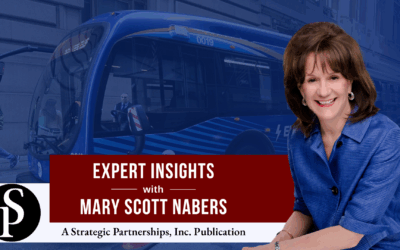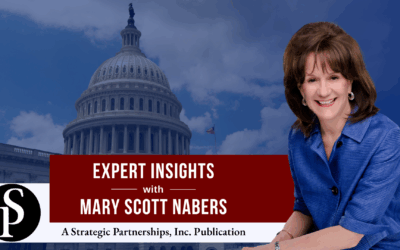Throughout the country, consortiums, partnerships and work groups are being formed to launch large critical projects. There’s a reason for the collaboration and it is noteworthy enough to point out what the data shows.
Partnerships and regional consortiums accomplish more than any one public entity can deliver, especially when funding is needed for large, complex initiatives. With competition for funding at its peak, a competitive advantage is a huge benefit and partnerships are delivering that advantage. Consortiums that include regional partners are more often than not receiving the funding requested for large initiatives and many of these working groups are delivering the largest infrastructure investments in their regions.
In most cases, collaborative initiatives bring other benefits as well. Working groups can provide innovative project planning, expedited timelines, better risk management, shared bidding costs, economic development incentives and pooled sources of funding. More broadly, though, they combine members’ strengths, capabilities and resources. When there is a strong base of planning and support by a regional partnership, the likelihood of funding success is much stronger and large federal grant awards are much more common.
 A group of regional leaders in Atlanta, Ga., announced the establishment of the Atlanta Regional Infrastructure Consortium at the end of 2022. It included planning officials, subject matter experts and executive leaders representing local agencies throughout the region, and it was formed to gain a competitive advantage when applying for federal grants. Until recently, the region had only managed to secure funding from nine out of USDOT’s 933 discretionary grant programs over the previous 15 years. The local leaders were incentivized by a recent report that provided data proving that when multi-jurisdictional partnership groups applied for federal funding, the track record of success is much higher. Atlanta’s newly formed consortium of partners representing the 11-county metro area will prioritize projects, work together to secure funding for critical projects and then collaborate on oversight.
A group of regional leaders in Atlanta, Ga., announced the establishment of the Atlanta Regional Infrastructure Consortium at the end of 2022. It included planning officials, subject matter experts and executive leaders representing local agencies throughout the region, and it was formed to gain a competitive advantage when applying for federal grants. Until recently, the region had only managed to secure funding from nine out of USDOT’s 933 discretionary grant programs over the previous 15 years. The local leaders were incentivized by a recent report that provided data proving that when multi-jurisdictional partnership groups applied for federal funding, the track record of success is much higher. Atlanta’s newly formed consortium of partners representing the 11-county metro area will prioritize projects, work together to secure funding for critical projects and then collaborate on oversight.
State governments are also relying on working groups to expand the scope of public investments. On Feb. 17, The National Governors Association announced the creation of a working group to pursue infrastructure funding for state energy and infrastructure projects. The newly formed coalition will work together to streamline permitting, resolve legal issues and tackle procurement challenges to accelerate project deliveries. The state members will focus resources on energy projects that involve transmission, generation, transportation and/or mining.
With the success of capturing funding, consortiums will launch many large projects in 2023. Some examples of what to expect follow.
A consortium for offshore wind initiatives in Maine will oversee the launch of a large wind project. State leaders recently formed statewide partnerships to advance offshore wind power projects along the Atlantic coastline. The group includes representation from the fishery industry, the Governor’s Energy Office, the Department of Marine Resources (DMR) and other state agencies. Members of the consortium will join forces to address research and consideration of numerous aspects of offshore wind projects. The group will also be responsible for planning decisions and execution of the project. A Request for Proposals (RFP) for research assistance will be launched in mid-2023. Other initiatives will follow, and the consortium’s planning documents indicate that construction will be underway for the first floating offshore wind port on the east coast by 2025.
In northern Arizona, a $61 million federal investment includes funding for a public motorized travel management plan. The project will provide services for the Apache-Sitgreaves National Forests. An environmental review will be finalized this month and an implementation start is forecasted for late 2023. Local officials have joined to form a working group that will ensure delivery of this project as well as several other restoration initiatives across the four national forests in this region of Arizona. The consortium will also deliver projects relating to forest management, health care, behavioral care and broadband deployment.
Officials in Rockwall County, Texas have announced a sequence of large-budget road projects that will be launched over the next several years. Regional partners will oversee a broad slate of critical road repairs. One of the upcoming projects is scoped to widen State Highway 205 from a 2-lane rural roadway to a 4-lane urban highway. This project alone has an estimated budget of $202 million. Planning officials representing Rockwall County, the Texas Department of Transportation and the North Central Texas Council of Governments will coordinate efforts to secure federal grant funding for all the consortium’s upcoming road projects.
A working group organized in Pasadena, Calif., will soon begin to revitalize a transportation corridor with a budget of $78 million. The partnership group will oversee development of a regional transportation plan and federal funding has already been awarded for the project which will have numerous aspects. Members of the partnership will collaborate with local leaders to restore a stubbed highway. The objective of the consortium will be to accelerate the transformation of a 50-acre transportation corridor.
The data relating to federal funding support being awarded to coalitions and partnerships is significant and worthy of note. Private sector firms interested in contracting opportunities for almost any type of project in 2023 will likely find them by checking out consortiums applying for funding in any state.






